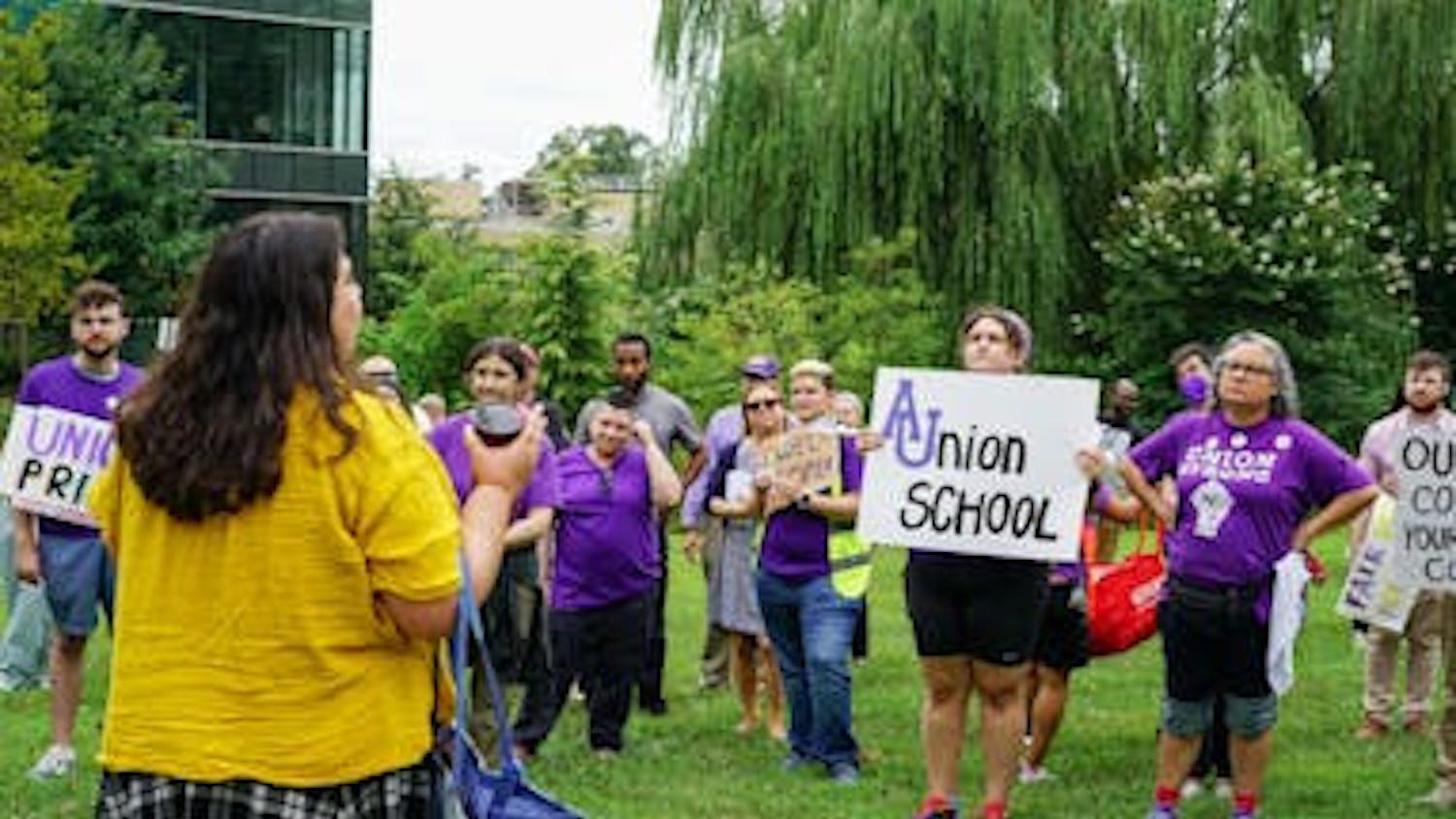Almost 200 murders occurred in D.C. in 2004, the fewest since 1986. In the Police Service Area that includes AU, no one was murdered last year, but theft was up 21 percent from 2003.
Overall, crime dropped in every major crime category in all seven districts, according to preliminary statistics, said Metropolitan Police Department Chief Charles H. Ramsey in the department's weekly newsletter.
The area that includes AU is the safest.
"We have the lowest crime in the District of Columbia," said Lt. Jeannie Sullivan of Police Service Area 205, which extends from the Potomac River east to Massachusetts Avenue NW and from Western Avenue NW, south to 42nd and 44th streets. It's the largest Police Service Area in Police District 2, which encompasses western D.C.
Most of the crimes reported in this service area involved stealing. The most frequent crime was theft, defined as stealing from an individual, usually in a non-confrontational way. This category includes the disappearance of items when left unattended. There were 100 thefts in PSA 205 last year. Robbery, defined as stealing that involves weapons, totaled seven. Police counted 46 burglaries, which entail theft from a commercial building or home. Twelve automobiles were stolen and 46 thefts from automobiles occurred.
Sullivan said that citizens could prevent some crimes by being more careful with their property. The low crime rates, she said, can give a false sense of security.
"I think [citizens] become complacent, they don't lock things up ... so it's a crime of opportunity," she said. "It's a quiet neighborhood ... so some people take advantage of that."
Despite lower overall crime in D.C., the capital is still one of the most dangerous cities in the country. Boston, a city of comparable size, had a homicide rate of about 10 per 100,000 residents. The District's rate is 35 per 100,000 residents. MPD counted 198 murders in 2004, 24 of which were juveniles. Overall, this is 50 fewer murders than in 2003.
Washington became known as the "murder capital," with more than 400 homicides each year from 1989 to 1993. In 1991, murders totaled 482.
This year, however, has been "extraordinary" for the MPD and D.C. communities, Ramsey said.
"All of these positive trends are the result of one overriding factor: the level of commitment and partnership among police, other city agencies and the community."
MPD restructured Police Service Area boundaries in May to better match neighborhood boundaries and to encourage community crime watch as part of its "Policing for Prevention" strategy.
"Our police officers, supervisors and residents responded to this change with tremendous energy and determination," Ramsey said. Citizens got involved by attending PSA meetings, forming citizen patrols, creating community listservs and getting involved in problem-solving efforts.
The department has focused resources on 14 specific neighborhoods that have the highest crime levels.
"Operation Fight Back" expanded in 2004. The program includes "regular blitzes that are designed to clean up the conditions that can breed crime and disorder in neighborhoods throughout the District," Ramsey said.
In this low-crime region, students say they feel safe. Chris Marcantonio, a senior in the School of Public Affairs, said he doesn't consider the area around AU to be "typical Washington."
"I think that in general, I feel safe because I know that I am not putting myself at high risk. I'm not out dealing or buying drugs, and I'm not in bad neighborhoods," he said. "AU is in an extremely affluent neighborhood with heavy police presence."
Some students, like Jeannine Ajello, a freshman in the School of International Service, said they're glad to know that murders are down, but they had never really worried about the issue.
"It's good to hear, but it doesn't really affect my sense of personal safety very much. The area that the school is in and the places I frequent never really seemed dangerous to me," she said. "I think most students aren't concerned for the same reason that I'm not very concerned. We spend most of our time in the same areas of Northwest D.C., where we feel safe."
Sullivan says that even though crime rates in the region around AU are low, it's important to stay vigilant. She encourages students to keep track of their property and report suspicious activity to the police.
Sullivan said that even in this area, "[y]ou just can't trust everybody"




